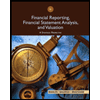
FUND. OF FINANCIAL MGMT (LL)--W/ACCESS
9th Edition
ISBN: 9781337948982
Author: Brigham
expand_more
expand_more
format_list_bulleted
Question
Chapter 1, Problem 11Q
Summary Introduction
To determine: The effect of the investment on the company’s earnings per share, intrinsic value and the price of the stock.
Introduction:
Intrinsic Value: The true value of the share which is based on the future earnings of the company determined by considering present worth and future earning that is intended for the shareholder.
Earnings per Share: Earnings per share are the monetary values of the share which dhows the profitability of the company and it is considered as that part of the profit which is distributed to number of shares outstanding
Expert Solution & Answer
Want to see the full answer?
Check out a sample textbook solution
Students have asked these similar questions
What is the difference between a contra asset account and a liability?i need help.
What is the significance of a company’s price-to-earnings (P/E) ratio? i need answer.
What is the significance of a company’s price-to-earnings (P/E) ratio?
Chapter 1 Solutions
FUND. OF FINANCIAL MGMT (LL)--W/ACCESS
Ch. 1 - What is a firms intrinsic value? Its current stock...Ch. 1 - When is a stock said to be in equilibrium? Why...Ch. 1 - Prob. 3QCh. 1 - Prob. 4QCh. 1 - Prob. 5QCh. 1 - Prob. 6QCh. 1 - Should stockholder wealth maximization be thought...Ch. 1 - Prob. 8QCh. 1 - The president of Southern Semiconductor...Ch. 1 - Prob. 10Q
Knowledge Booster
Similar questions
arrow_back_ios
SEE MORE QUESTIONS
arrow_forward_ios
Recommended textbooks for you
 Intermediate Financial Management (MindTap Course...FinanceISBN:9781337395083Author:Eugene F. Brigham, Phillip R. DavesPublisher:Cengage Learning
Intermediate Financial Management (MindTap Course...FinanceISBN:9781337395083Author:Eugene F. Brigham, Phillip R. DavesPublisher:Cengage Learning EBK CONTEMPORARY FINANCIAL MANAGEMENTFinanceISBN:9781337514835Author:MOYERPublisher:CENGAGE LEARNING - CONSIGNMENT
EBK CONTEMPORARY FINANCIAL MANAGEMENTFinanceISBN:9781337514835Author:MOYERPublisher:CENGAGE LEARNING - CONSIGNMENT Financial Reporting, Financial Statement Analysis...FinanceISBN:9781285190907Author:James M. Wahlen, Stephen P. Baginski, Mark BradshawPublisher:Cengage Learning
Financial Reporting, Financial Statement Analysis...FinanceISBN:9781285190907Author:James M. Wahlen, Stephen P. Baginski, Mark BradshawPublisher:Cengage Learning

Intermediate Financial Management (MindTap Course...
Finance
ISBN:9781337395083
Author:Eugene F. Brigham, Phillip R. Daves
Publisher:Cengage Learning


EBK CONTEMPORARY FINANCIAL MANAGEMENT
Finance
ISBN:9781337514835
Author:MOYER
Publisher:CENGAGE LEARNING - CONSIGNMENT

Financial Reporting, Financial Statement Analysis...
Finance
ISBN:9781285190907
Author:James M. Wahlen, Stephen P. Baginski, Mark Bradshaw
Publisher:Cengage Learning
